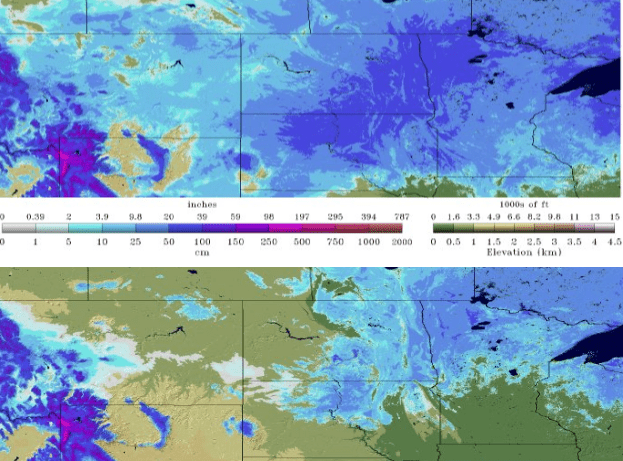As predicted by many meteorologists, and feared by the rest of us, flooding in the Midwest has claimed more victims this week. Most of the damage to homes, businesses, farms and ranches has been in eastern Nebraska and western Iowa, costing an estimated at $3 billion so far. But rising waters are now causing problems upstream.
To briefly recap the flooding impact so far, the storm that started it all hit the region on March 15, followed by the onset of record flooding the next day which lingered into last week. Heavy rain, snowmelt and ice jams were too much for the ground to handle.
Floodwaters have swamped grain bins and washed away cattle. The deluge has stalled crop shipments for U.S. grain traders, as well as inundating roads and rail lines that companies including Hormel Foods (NYSE: HRL) and Tyson Foods (NYSE: TSN) use to move meat.
Cargill, Inc. said on Thursday that flooding last week closed three of the agricultural conglomerate’s grain elevators in Nebraska for a day, in addition to one in Iowa. Earlier this week, grain-trading giant Archer Daniels Midland (NYSE: ADM) said that flooding and rough winter storms may end up cutting its first-quarter operating profit by as much as $60 million. ADM shut down a facility in Columbus, Nebraska – one that makes products including ethanol – for 24 hours after flood waters swamped a nearby rail line.
“We won’t be able to resume normal operations until full rail service is back up and running,” Chris Cuddy, senior vice president of ADM, told the Wall Street Journal today.
BNSF Railway Company, owned by Berkshire Hathaway (NYSE: BRK), and the Union Pacific Railroad (NYSE: UNP) still have tracks that are out of service. However, BNSF is expecting to reopen some tracks this weekend, according to the company’s latest outage report.

This week, other states have fallen victim to the flooding, putting the lives of more people and livestock in danger. Snowmelt has led to flooding along the Yellowstone River in western North Dakota and eastern Montana, prompting the evacuation of dozens of homes on Thursday. About 50 homes were evacuated on March 26 near Cartwright, North Dakota, home to about 150 people, as well as Fairview, Montana, home to about 850 people. The flooding also forced the closure of Highway 200 between the two towns.
In White Horse, South Dakota, dozens of people were evacuated from the Cheyenne River Sioux Tribe Reservation as the Moreau River rose. According to the Argus Leader, about 50 people were evacuated, some by helicopter.
The melting snow wasn’t able to soak into the frozen ground, leading rivers to overflow their banks and triggering ice jams. With more flooding expected in the coming weeks from additional snowmelt, North Dakota Governor Doug Burgum declared a statewide flood emergency on Wednesday after visiting the impacted areas.
The latest broad outlook from the National Oceanographic and Atmospheric Administration (NOAA), which includes the National Weather Service (NWS), is pretty grim. Ongoing snowmelt and a forecast of above-normal spring precipitation mean that flooding, to varying degrees, could linger at least into May for many people across the region, possibly flowing farther downstream toward the Gulf Coast states.







